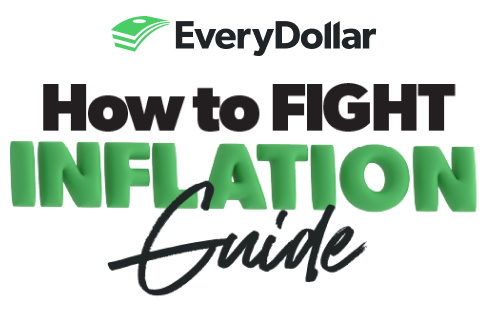
How to Adjust Your Budget to Fight Inflation
Okay. You set up your budget. But inflation’s still dialing up the pressure. Either your money is so tight you can barely breathe, or you find yourself running to a credit card to make ends meet.
It doesn’t have to be this way. These five steps will help you get some breathing room again—without the credit cards.
1. Review your spending.
You know costs are up, but you might not know exactly where rising prices are hitting you the hardest. You’ve got to take inventory. Get out that budget you just made and look over your spending. Ask yourself these questions:
- Which budget lines have been the hardest to keep in check?
- What do I spend money on that I could do without for a while?
- Where have I been overspending?
We can probably guess two answers for that last one: groceries and gasoline. Food costs continue to go up, and even though gas costs are finally going down some, they’re still high.2 That brings us to our next point . . .
2. Find ways to save.
Once you know the budget lines inflation is affecting the most, you can start finding ways to save. This tip is so very important, we’ve got several sections in this guide to break it down, including:
3. Earn extra money.
Your expenses are going up. You can help your budget by making your income go up too. How?
Well, a good side hustle goes a long way. And some jobs you can even do from home! Yes, it’s extra work (literally). But the income boost you get with that extra work could balance out the increase in costs you’re feeling right now.
Again, this is so important that we’ve got an entire section on How to Increase Your Income in this guide.
4. Cut some expenses.
You can also stand up against inflation by cutting your spending. Remember when you were reviewing the budget (in the first step) and asking yourself what you could do without . . . for a while? Hey, we admit this part isn’t fun. But cutting a few budget lines could be exactly what your budget needs right ow.
We’ve got more on how to do this step in the Decrease Your Expenses section!
5. Shop around.
Costs are on the rise everywhere, but you can still find better prices if you take the time to shop around. What does that look like? Something like this:
- Look at multiple websites before you make an online purchase.
- Find the cheapest grocery store (that still carries what you need, of course!) by comparing prices online and in real life.
- Check out the grocery stores with gas reward points (not a credit card—but a loyalty card that gets you gasoline at a discount). These might end up being the best pick because of that perk.
- Try stores closer to home so you can save on travel.
- Download Gasbuddy so you can check gas prices on the go to find the best deal.
It may take more time to find the best deal, but shopping around is a great way to fight inflation.
6. Adjust budget lines.
You just found the biggest problem spots in your budget, trimmed where you could, and worked on ways to save. Now it’s time to adjust those budget line totals.
In 2022, the average spent on groceries was about $340 (for singles) to over $1,300 (for families of four) on the moderate spending scale.3 But right now, with food costs up, you’ll probably need to add more to that budget line.
What about gas? Oof. The price per gallon has doubled for some folks. Which means you might have to double your planned spending there.
The fact is, this hurts. But it’s going to be okay. You are going to be okay! That’s why you’re using this guide—because you won’t take this inflation business lying down. You’re being intentional with your money and adjusting the budget so it’s prepared to fight.
You’ve got this.

